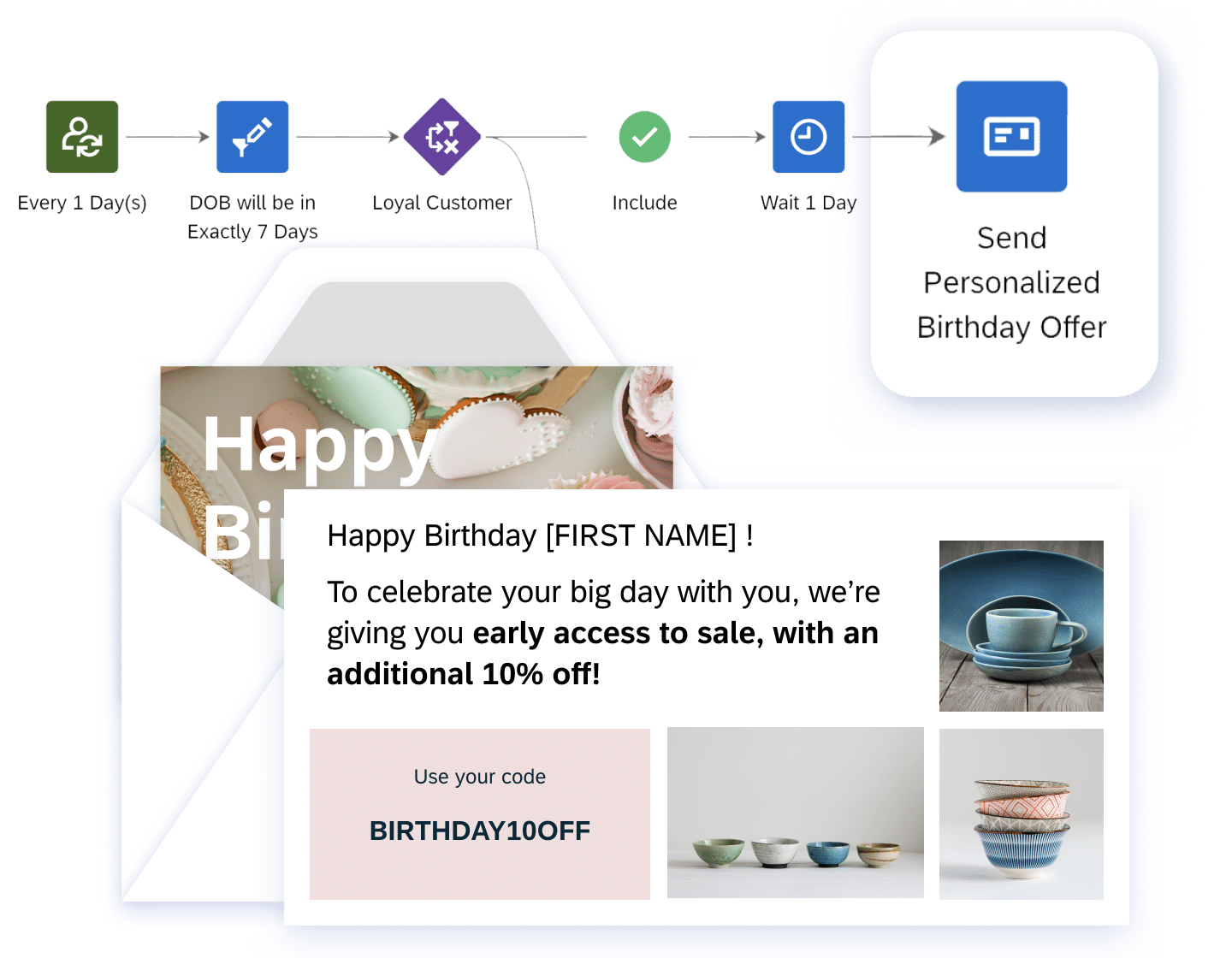Maximizing ROI with Direct Mail in Omnichannel Marketing
Marketing teams utilize various channels, including email, social media, websites, text messages, and physical mail. This integration is known as an omnichannel marketing strategy. It allows customers to transition seamlessly between channels while retaining the context of their journey. For instance, a customer might see an online ad, receive a catalog, and later purchase through an app.
Direct Mail's Contribution to Omnichannel Strategies
Direct mail acts as a tangible touchpoint that enhances digital marketing efforts. It does not replace digital channels; instead, it complements them, reinforcing messages across both mediums. Direct mail contributes to a consistent customer experience by providing predictable delivery, personalized content, and a format that captures attention longer than digital media.

Image courtesy of USPS
Key Benefits of Direct Mail:
Tangible Engagement: Recipients physically interact with mail, enhancing message retention.
Trust Factor: Consumers typically trust direct mail more than online ads or social media posts.
Attention Capture: Direct mail maintains recipient attention for an average of 17 minutes.
Direct mail can reinforce online messages, drive traffic to digital platforms, or follow up after digital engagement. It operates within a broader system where every channel supports the others.
Integrating Direct Mail with Digital Channels
Direct mail can synergize with digital marketing channels for a unified experience.
Email and Direct Mail Synergy
Using direct mail followed by an email can enhance email open rates by up to 27%. It is vital for both mail and email content to align, ensuring clarity and recognition across formats.
Effective Pairings:
Send a postcard about a new product, followed by an email offering a discount.
Reactivate inactive customers through mail before an email follow-up.
Use mail as a reminder after an email promotion for those who didn’t convert.
Pairing Mail with Social Touchpoints
Including QR codes in mail pieces can direct recipients to social media pages, facilitating multi-channel engagement. Additionally, retargeting mail recipients with social media ads reinforces brand visibility across platforms.
SMS and Retargeting Tactics
Sending SMS messages after mail delivery can remind recipients of offers or provide follow-up information, enhancing message reinforcement. Mail can include SMS opt-in options, facilitating audience growth through additional touchpoints.
Steps to Automate and Personalize Direct Mail Campaigns
To maximize ROI through direct mail, automation and personalization are essential components of an omnichannel strategy.
1. Data Collection and Segmentation
Begin by aggregating customer data from various sources, including websites and CRM systems. This unified database allows segmentation based on behavior, preferences, and lifecycle stages. Digital behaviors can trigger timely mail sends, linking digital activity to physical outreach.
Data Integration Tips:
Connect CRM systems to direct mail platforms.
Utilize consistent customer IDs across marketing systems.
Create segments applicable to both digital and physical channels.
2. Dynamic Content and Personalization
Personalizing physical mail extends beyond using a recipient's name. Tailor content based on location, past purchases, or user activity. Variable data printing enables automatic image and offer changes in mail pieces, enhancing relevance.
3. Trigger-Based Mailing
Mail can be sent automatically when specific events occur, known as triggers. Effective triggers include:
Cart abandonment.
Service anniversaries.
Post-purchase follow-ups.
Measuring Impact and ROI Across Multiple Channels
To evaluate direct mail's value in omnichannel marketing, implement trackable mail pieces.
1. Trackable Mail Elements
Direct mail can feature elements like QR codes linking to online actions, unique landing pages, or promo codes for tracking responses. Including dedicated phone numbers can also help measure interactions generated from mail.
2. Linking Digital Analytics with Physical Touchpoints
Utilize UTM parameters in URLs to trace user interactions stemming from direct mail. Cross-channel attribution models can analyze the contribution of direct mail to customer actions.
3. Real-Time Reporting Tools
Employ tracking tools to monitor mailpiece delivery status in real time. Response rates can be calculated by comparing the number of responses to mailpieces sent.
Overcoming Common Challenges in Omnichannel Direct Mail
Compliance and Security Considerations
Ensure compliance with data privacy laws, such as the CCPA and GDPR, when utilizing customer data in direct mail campaigns. Implement security protocols to protect customer information and manage opt-outs consistently across channels.
Ensuring Consistency and Brand Quality
Maintain a unified brand identity across all channels by aligning colors, logos, and messaging. Brand templates and style guides can facilitate consistency, while approval workflows ensure quality control.
Speed and Cost Efficiencies
Automation can significantly reduce production timelines. Batch processing similar jobs together decreases setup time and printing costs. Dynamic templates allow customization without restarting the design process.
Direct mail integration with marketing automation tools can streamline campaign execution based on digital events, creating a seamless omnichannel experience.
Driving Growth with an Integrated Strategy
Integrating direct mail within an omnichannel strategy enhances marketing performance. When paired with digital channels, response rates can increase by up to 40%, while conversion rates improve by 15-30%. This integration relies on shared data and coordinated timing.
Automated direct mail solutions manage the process efficiently. They ensure mail aligns with digital campaign timelines while utilizing the same customer data for personalization.
Measurement tools track recipient responses through methods like QR codes and personalized URLs, linking mail to tangible outcomes such as purchases or sign-ups.
Lob provides tools to support these processes, offering automation features, personalization capabilities, and reporting dashboards to help teams manage direct mail within their existing marketing systems.

Image courtesy of Emarsys




